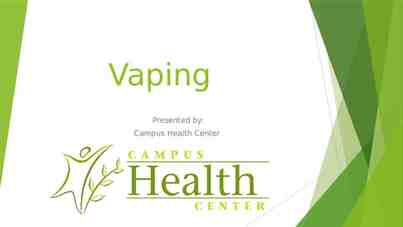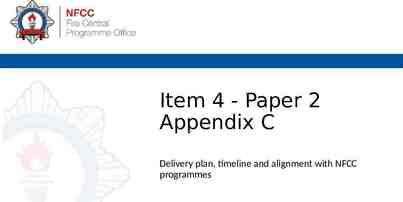Knowledge Management infrastructure Knowledge Technology Lecture (8)
43 Slides127.14 KB
Knowledge Management infrastructure Knowledge Technology Lecture (8)
The American Productivity and Quality Center (APQC) (1997) suggests that for organizations to succeed in KM initiatives, a suitable IT infrastructure must be established.
Information Technology definition Information technology has been defined as “The fundamental building block that supports and coordinates KM initiatives". For that reason, Davenport and Prusak (1998) termed it knowledge technologies or “Techknowledgies”.
:The importance of technology for KM There is a debate around the effectiveness of the ITbased system as a facilitator for the KM process. Some authors argue a limited role for IT in the KM process because its effectiveness is highly dependent on:- Whether an individual knows or not what he is looking for. How individuals modify, use and transfer their experiences to others. An individual's trust in knowledge which resides in a system .
Also ,according to the resource-based view of the firm , all the information technology infrastructure can’t determine as a strategic asset ,it is a tangible; it is largely software-dependent; which is easily replicated, copied, or cloned even when protected by regulatory assets such as copyright, patents and licenses.
On the other hand Many authors maintain that technologies, if correctly designed and implemented, can effectively support KM. Information technology plays different roles in KM:1) Obtaining knowledge. 2) Defining knowledge. 3) Storing knowledge . 4) Categorizing knowledge . 5) Indexing knowledge.
6- linking knowledge-related digital items. 7-Seeking and identifying related content. 8- Flexibly expressing content based on various utilization backgrounds. According to this viewpoint organizations should have well-developed technology to leverage KM.
Knowledge Technologies in Practice Knowledge-intensive firms (KIF) today are employing one technology or a combination of many key technologies; Groupware - Messaging Web browsers - Document management Search &Retrieval -Data mining Visualization – Group decision support
How IT helps in KM practice ;within different organizations Three types of Knowledge technology are found. Firstly, The knowledge -oriented technologies such as group-ware and web browsers which directly process knowledge work and the sharing of knowledge within the organization. Secondly, The function-oriented technologies such as office automation, robotics and desk-top computing technologies those support operational level activities such as data processing, production, marketing ,and service delivery.
Finally, The specialty-oriented technology, Which supports specialized functions within the firm: those functions which require a high level of know-how, for example computer-aided design and manufacture software (CAD/CAM), and expert systems software
Knowledge Technology in Organizations
E-Bay E- Bay : is an E-business example in which knowledge and its management forms the lifeblood: the fundamental nature of its work involves the use and convey the knowledge to market participants, and to the system itself. It acquires Knowledge about sellers' offers, buyers‘ commitments, and participants' market experiences. It assimilates knowledge, filtering, screening and organizing. It also selects simplified knowledge as needed to satisfy participants' requests and applies in its own internal processing for such activities as coordinating participant interactions and enforcing rules of conduct.
It distributes knowledge about states (issuing alerts, showing auction status, indicating participant reputation), about procedures (how to initiate auctions, how to ensure a safe trading experience) and about policies ( trading tips, pays ) (All in all) . What the E-Bay system does is an example of Knowledge management which cannot be done without the computer based technology
Ford Motor Ford Motor is a clear example of an organization which is heavily investing in knowledge technologies to redefine the auto manufacturing industry and create a SCA in the auto industry. The organization has established the auto exchange mart -an intensive KM technology and electronic commerce system intended to shift the car-manufacturing model from a ‘push’ business model to the ’pull’ model, in which the consumer determines the precise configuration of the car before it is manufactured.
Further, auto designers, marketers and production engineers are able to gain insights and knowledge about the customer. Thus, by effectively harnessing the capabilities provided by IT, Ford is attempting to create a SCA in the auto industry .
Microsoft Microsoft also developed a project entitled ‘skills planning development’ (SPD), which focused on competencies needed to stay on the leading edge in the workplace, It implemented an on-line system which contained a job rating system and rating database, as well as competency levels for employees. This system had a web front end for easy access through Microsoft's intranet, and thus it achieved increased communication among employees and an increased advantage over competitors .
Knowledge Technology and KM Processes Knowledge technology and KM processes are closely tied together, as both of them help the distribution of knowledge vertically as well as horizontally within the organization. So the main goal of many organizations today is to use advancements in KT to conduct KM
KT and K-Creation Process K- Technology is a key enabler of the knowledge creation process. Building on Nonaka’s theory, IT is considered as another form of Ba by which the different modes of knowledge creation can be enhanced. For example; data warehousing, data mining, document repositories and software agents have a great value in cyber Ba. Also, information systems designed for the support of collaboration, coordination and communication processes are a component of interacting Ba.
Intranets and email can also support individual learning (conversion of explicit knowledge to personal tacit knowledge) through capabilities such as computer simulation (to support learning-by-doing) and smart software tutors. Furthermore, communication technology can increase the quality of k. creation by increasing the interaction among organizational members, sharing ideas and perspectives, which enables individuals to arrive at new insights and accurate interpretations.
Technology can provides solutions .for the four conversion processes Tacit to Explicit Tacit to Tacit Answering questions Annotation e-mail CAD Telecommunication technology E-meeting Video conference Synchronous collaboration Telecommunication technology Explicit to Explicit Text search Document categorization Simulation CAD- EMS Explicit to Tacit Visualization Brows-able video\audio of presentation Communication technology simulation
KT and K- Dissemination Process KT can increase knowledge transfer by extending the individual's reach beyond formal communication lines. Computer networks, electronic bulletin boards and discussion groups create a forum which facilitates contact between the person seeking knowledge and those who may have access to the knowledge; such networks expose individuals to more new ideas
Metadata and knowledge maps prove to be as important as the original knowledge itself, enabling individuals to rapidly locate either the knowledge or the individual who has the needed knowledge, more rapidly than would be possible without such ITbased support Not : Metadata is defined as (Knowledge about where the knowledge resides)
In addition, informational communication technology has a direct and indirect influence on the motivation to share knowledge, because it can play different functions: 1. Eliminate hindrances& obstacles 2. Provide channels to obtain information 3. Correct Knowledge flow processes 4. Identifies the location of knowledge carrier and knowledge seeker. 5. Make searching and using knowledge far easier
KT and K- Application Process KT can have a positive influence on knowledge application, through enhancing k- integration and facilitating the capture, updating, and accessibility of organizational directives. For example, many organizations are enhancing the ease of access and maintenance of their directives (repair manuals, policies and standards) by making them available on corporate intranets.
This increases the speed at which changes can be applied. Also, organizational units can follow a faster learning curve by accessing the knowledge of other units which have gone through similar experiences. Moreover, by increasing the size of individuals' internal social networks and by increasing the amount of organizational memory available, KT allow for organizational knowledge to be applied across time and space
The most important technology in .facilitating the main KM processes K K K Application Dissemination Creation expert systems workflow systems communication technology groupware intranet electronic bulletin boards k-directories internal networks communication channels groupware intranet data mining learning tools just in time learning groupware intranet
Techknowledgies Examples
Internet/Intranet/ Extranet Internet is a network to share knowledge with knowledge providers across the world – Intranet provides same but restricted access from outside- that networks have been built in many corporations for information sharing and ecommerce An extranet is a computer network that allows controlled access from the outside for specific business. Extranets are extensions to, or segments of, the private intranet .
Data mining Data mining is the exploration and analysis of large quantities of data in order to discover valid, novel, potentially useful, and ultimately understandable patterns in data. Use a variety of decision trees and modelling algorithms to discover patterns and correlations in vast amounts of data . Use sophisticated data search capabilities.
Groupware tools Allows to work on same document by multiple users Maintain and update identical data on numerous PCs Organising discussions Storing information Moving and tracking documents of groups Preventing unauthorised access of data Mobile use to access corporate network
WEB 2.0 PLATFORM Shift to dynamic social web applications Network effects critical to their success Provide customer services free – Google ( 200bn), YouTube ( 1.6bn), Face book ( 50bn)
MASHUPS Allows content from different sources to combine with applications for different business processes E.g. Getting insurance quote (price offer )from website E.g. Starbucks helps customers locate nearest café once they’ve entered postcode Information from external sources can be inaccurate or may change significantly in future.
BLOGS Blogs – adding thoughts or diary of events Podcasts – audio blogs V.log – video blog Trackbacks – allows bloggers to see who’s linking to them Can act as alternative to face-to-face meetings to engage in problem solving Engage with customers across boundaries
Tipping Point Word OF Mouth Epidemics ‘Connectors’ – social glue Information brokers on best deals etc. ‘Salesmen’ – good at convincing you and getting you to act. Amazon is reliant on ranking of reviewers to develop trust with customers
WIKIS Web pages that can be viewed and modified by anyone Allows to create or change web content Places power and freedom in hands of users rather than external ‘expert’ Works in progress on virtual ‘white boards’ Can be open to manipulation and vandalism Maintenance can be time-consuming
On-line Social Networks Individuals interact with others in community Social network sites (SNS): Face book, MySpace, LinkedIn. SNS tend to support pre-existing relationships rather than new ones Benefit from social capital and selfpresentation Risk over privacy from third party securing personal information Allows interaction with different people in network
Data Warehouse Database with query and reporting tools Stores current and historical data from internal and external sources Data mart – subset of data warehouse which contains summarised or highly focused data for certain users
Visualisation Modelling – way of representing objects e.g. journal covers, weather maps Rendering/presenting – makes computer generated image look like photograph e.g. texture mapping Virtual reality
VIRTUAL WORLDS )D-3( Computer-simulated worlds where users interact in real time through ‘avatars’ Avatars are ( 3-D )electronic cartoons of users; form of alter ego (to represent your self in a cartoon form ) Conduct meetings, workshops and recruitment Multinationals such as IBM, Dell, Ericsson, Bain
Case-based reasoning Capture and store past experiences as organisational knowledge System searches for stored cases with similar profile to new problem Adds unsuccessful cases to aid learning Built on artificial intelligence technology
The Impact of KT Knowledge technology can lead to a greater breadth and depth of knowledge creation, transfer and application in organizations, resulting in the following : 1) Improving the decision making process 2) Increasing knowledge- transfer speed 3) Supporting knowledge codification 4) Improving knowledge productivity
5-Improving communication among organizational members 6-Reducing the time and cost of information access 7-Facilitating rapid searches 8-Supporting collaboration
The End
















































